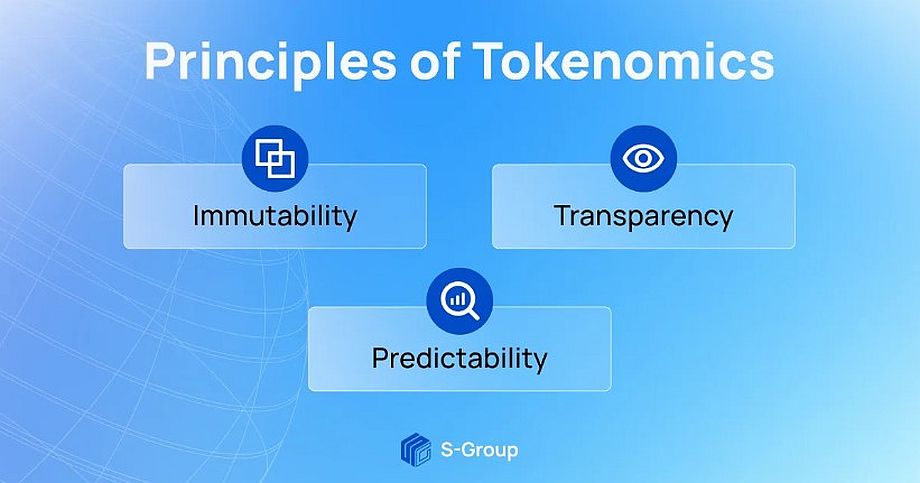Tokenomics in Cryptocurrency
When developing new cryptotokens, it is very important to pay attention to the competent development of an economic model of an asset – tokenomics. The success of a crypto project, its long-term and profitability depend on how well the tokenomics is developed.
In the article we tell what tokenomics in cryptocurrency is, why it is needed and what key elements it consists of.
Definition and main principles of tokenomics
The launch of a new crypto project is a complex process that involves the creators carefully considering every detail: marketing campaign, market promotion, high-quality technical implementation and development of tokenomics.
Tokenomics combines the words “token” and “economics” and is responsible for planning, implementing the development, distribution and consumption of a digital asset by users. The process of tokenomics allows the user to evaluate the prospects of the project, technical documentation, further development plans, activity and popularity of the community.
Tokenomics plays an important role for each of the participants who participate in the process of cryptocurrency circulation.
1. Crypto project team. When developing tokenomics, the project team determines the purpose of the token, its functionality, stability and distribution, as well as growth methods.
2. Expert economists. By studying the tokenomics of projects, experts determine the patterns of the cryptocurrency market operation.
3. Investors. Tokenomics allows investors to study the project in depth, see its development plans, deflationary scheme and asset allocation.
Principles of Tokenomics in Cryptocurrency
1. Immutability. Tokenomics details are prescribed in the smart contract code and uploaded to the blockchain, after which no one can change or delete them.
2. Transparency. Information about the project’s tokenomics is posted in a WhitePaper technical document, and all token transactions can be tracked in the blockchain browser.
3. Predictability. As the details of tokenomics are prescribed in the cryptocurrency code, users can use this information to analyze and predict the further development of the token.
Key elements of tokenomics in Cryptocurrency
When developing tokenomics, the crypto project team needs to consider a large number of factors that will affect the value of the asset, its economic model, and demand. Let’s take a closer look at these factors.
Definition of token supply
Token supply is measured in two metrics: the max supply and the circulating supply.
The max supply is the maximum amount of cryptocurrency that can be issued. For example, Bitcoin has a max supply of 21,000,000 coins. But despite this, projects like Ethereum, USDT, USDC have no max supply. In the case of Ethereum, the number of assets increases every year, while USDT, USDC stablecoins are provided by U.S. dollar reserves.
The circulating supply displays the amount of tokens available in real time. Tokens are constantly being created, burned or blocked in some way, which directly affects the price of the token. The current number of tokens in circulation allows you to calculate how many tokens will eventually be issued.
Functionality of tokens
Crypto projects issue tokens not only as currency and means of payment, but also give the holders of the asset access to benefits within the project. For example, low online transaction fees, access to passive income tools, and more. All of the opportunities that will be offered to investors are also specified in the tokenomics with a calculated number of tokens to provide.
Allocation of tokens
This factor shows who owns how much of the assets and it is very important that the tokens are allocated evenly. If you see that the project team or some large company owns most of the assets, you should think about the risks. The fact is that the holders of the majority of the tokens will be able to control the market and influence the rate.
It is also important to research the timeline for blockchain and token issuance. The issuance of a large number of tokens can affect its value, which is important to consider when planning an investment strategy.
Token Burning
Token burning is the destruction of a certain amount of assets from circulation in order to reduce their emission. Token burning can be done both by large platforms, cryptoprojects or exchanges, as well as by private investors who have a lot of capital. For example, Ethereum cryptocurrency creator Vitalik Buterin burned nearly $7 billion worth of Shiba tokens by sending them to a non-existent address. The creators of Binance Coin (BNB), Binance Cash (BCH), and Stellar (XLM) were the first to start burning tokens.
When studying tokenomics, it is important to pay attention to whether the project plans to burn tokens, because this process has a positive impact on the demand and exchange rate of the asset. It works like this – the higher the demand for the token, the higher its value. Conversely, the lower the demand, the lower the value. Burning tokens helps projects reduce the number of assets, thereby raising the demand for it.
User Incentive Mechanism
Incentive mechanisms are responsible for motivating users to take actions, which provides the project with the trust and long-term stability. The most obvious examples of user incentives are rewards for mining a new block and transaction fees on the Bitcoin network.
Summary of Tokenomics in Cryptocurrency
The concept of tokenomics continues to be actively developed and used in a variety of blockchain fields, such as DeFi and NFT. This active application and the great focus of crypto projects on creating well-designed tokenomics gives investors the opportunity to research the asset’s prospects in detail and make a decision.
But it is important to understand that none of the above elements guarantees the project 100% success. Therefore, experienced investors advise to analyze not only tokenomics, but also use other tools, such as fundamental and technical analysis. Thus, you will be able to objectively evaluate the prospects, plans, goals and how to implement them from the project.



